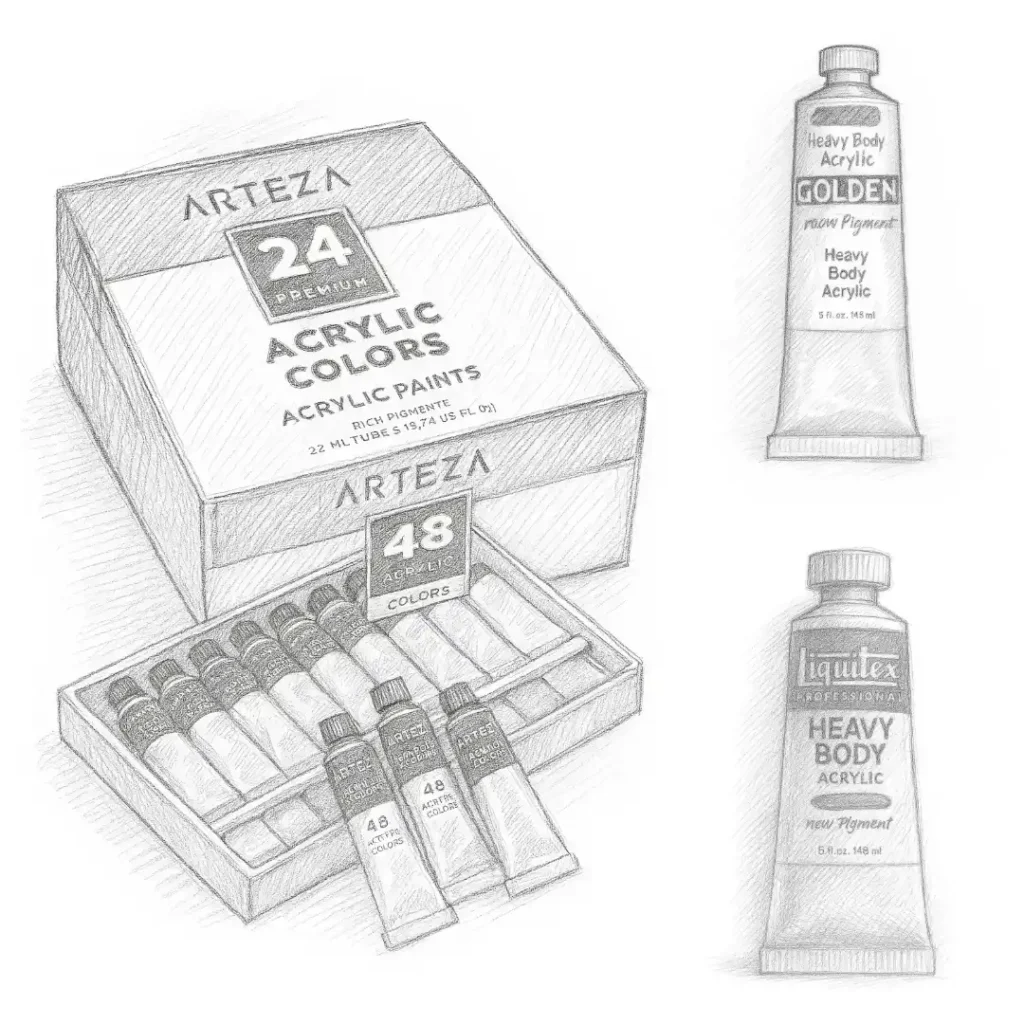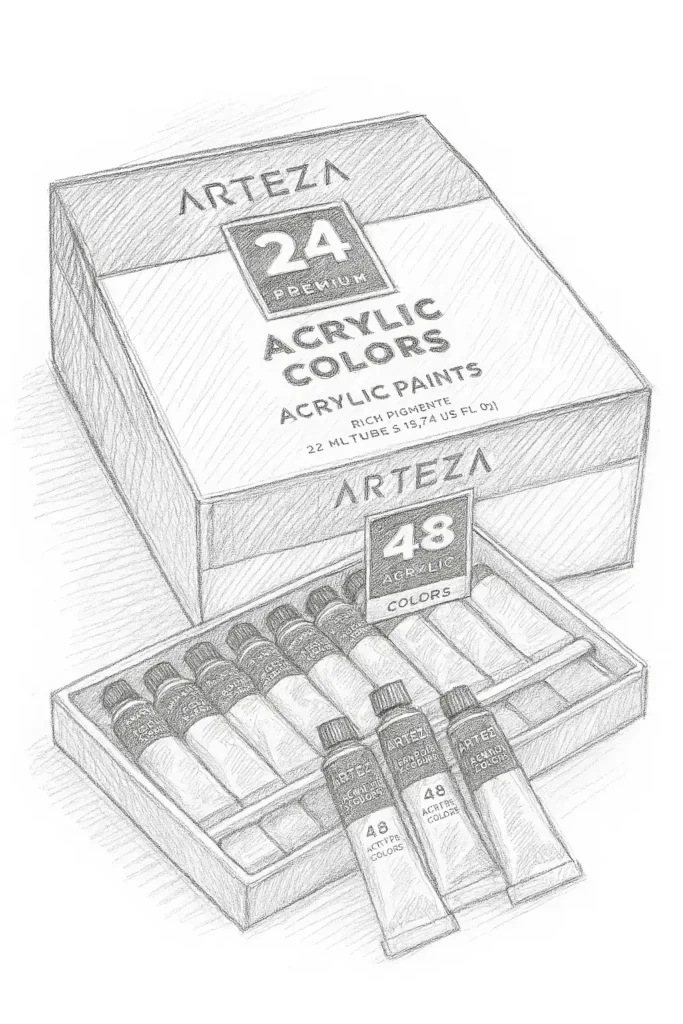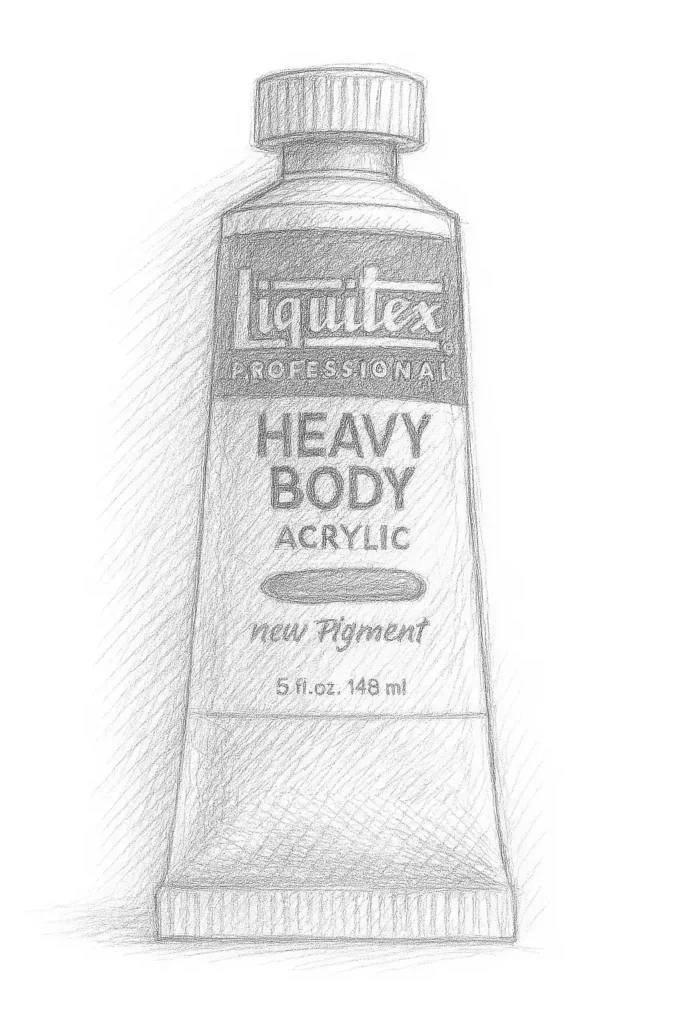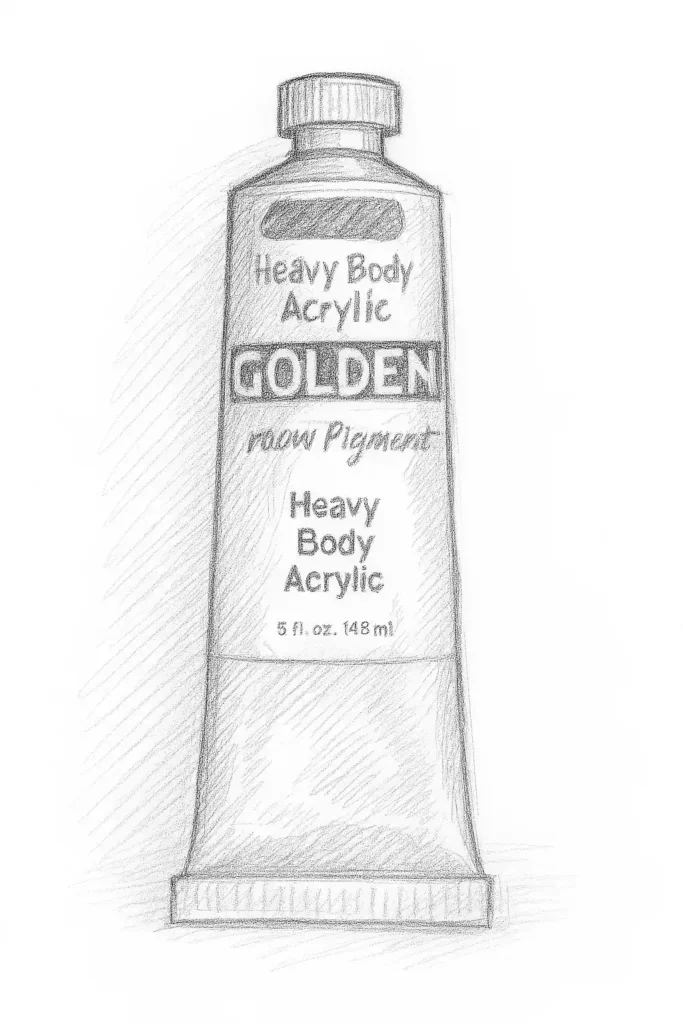“Golden acrylics give me the depth I need for serious studies — professional performance in a fast-drying form.”
Here is a summary of the online reviews and key features of this set:
Pros
- Exceptional Consistency: The defining feature is its smooth, rich, buttery consistency (heavy body). It is ideal for impasto techniques, as it has the ability to “stand up” and retain sharp brushstrokes or palette knife marks.
- High Pigment Load: Golden is famous for its high concentration of pure pigments in a 100% acrylic emulsion. This results in incredibly vibrant, rich, and saturated colors that require less paint to achieve full coverage and color saturation.
- Purity: The paints contain no fillers, extenders, opacifiers, toners, or dyes. This means the color shift from wet to dry is minimal, and the paints are extremely clean for mixing.
- Lightfastness and Archival Quality: As a professional line, all colors offer excellent or very good permanency and lightfastness, ensuring your artwork will endure without fading.
- Thixotropic Nature: The paint has a unique property where it thins out as you mix or brush it (loses viscosity) and then thickens up again when it’s at rest, which can make it feel very fluid to work with while still retaining its structure when you want it to.
- Mixing Versatility: The paints are completely compatible with the wide range of Golden mediums, gels, and other paint lines (Fluid, High Flow, etc.), allowing for endless texture and consistency variations.
Included Colors (Typical Set)
The 6-tube introductory set typically includes essential mixing colors:
- Titanium White
- Mars Black or Carbon Black
- Naphthol Red Light
- Benzimidazolone Yellow Medium
- Ultramarine Blue
- Permanent Green Light
Potential Considerations
- Price: Golden is one of the premium brands on the market, so the cost is significantly higher than student-grade paints. However, artists often note that the high pigment concentration means you use less paint overall.
- Sheen Variation: Because Golden adds no matting agents to unify the finish, the gloss of each color will naturally vary depending on the pigment’s characteristics—some will dry more matte, and others more glossy. An overall sheen can be achieved by varnishing the finished piece.
- Drying Time: Standard Heavy Body Acrylics dry relatively fast, which is a common characteristic of acrylics. If you require a significantly longer working time for blending techniques, you might prefer Golden’s OPEN Acrylics (a separate line).
In summary:
This set is considered a worthwhile investment for serious artists seeking the highest quality acrylic paint for techniques requiring thick, structural applications and maximum color vibrancy. It’s a true professional-grade experience.




